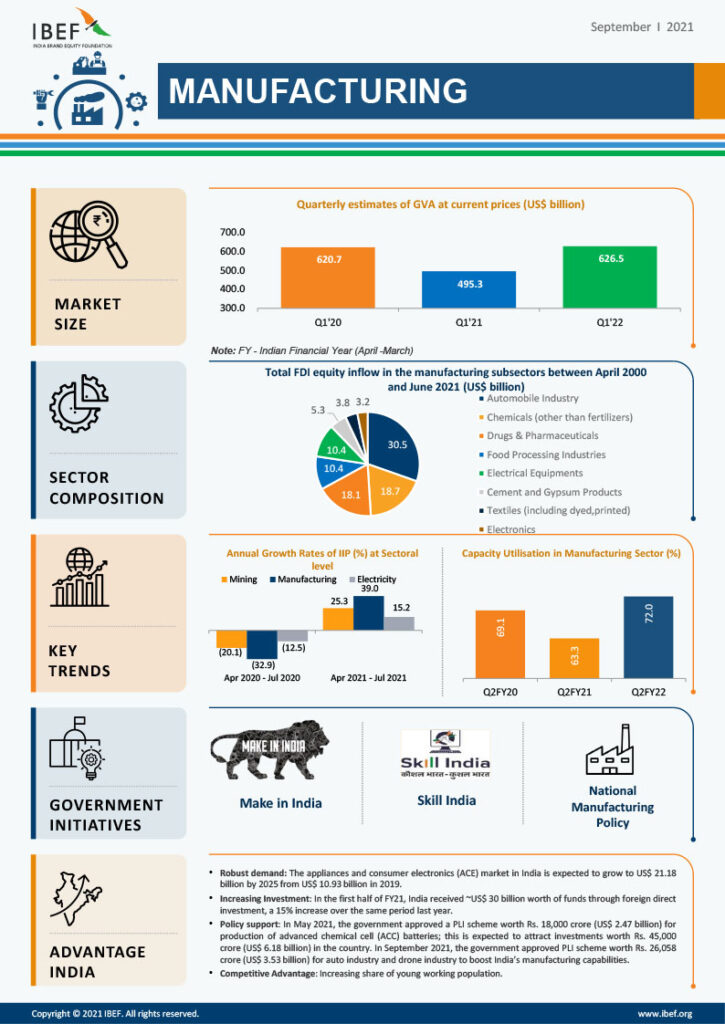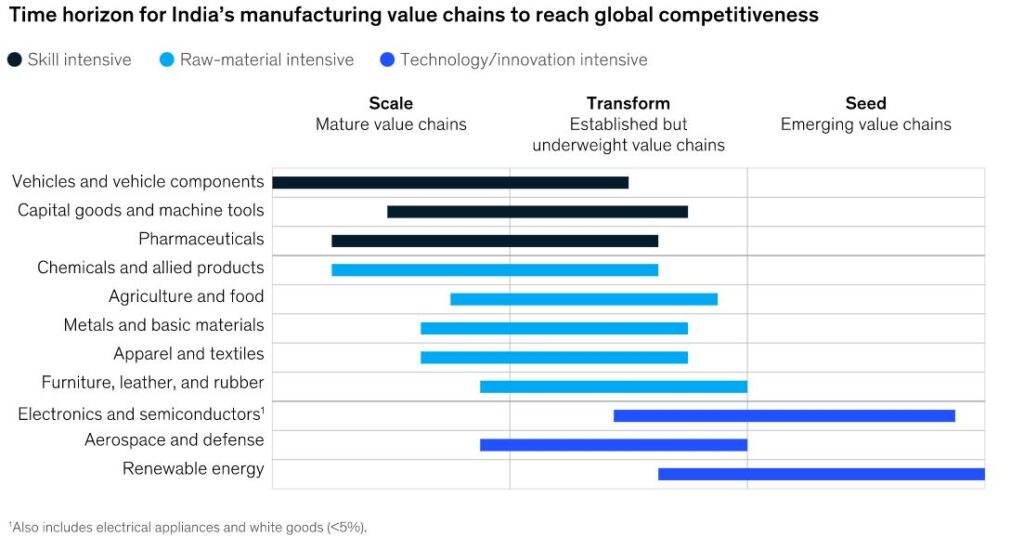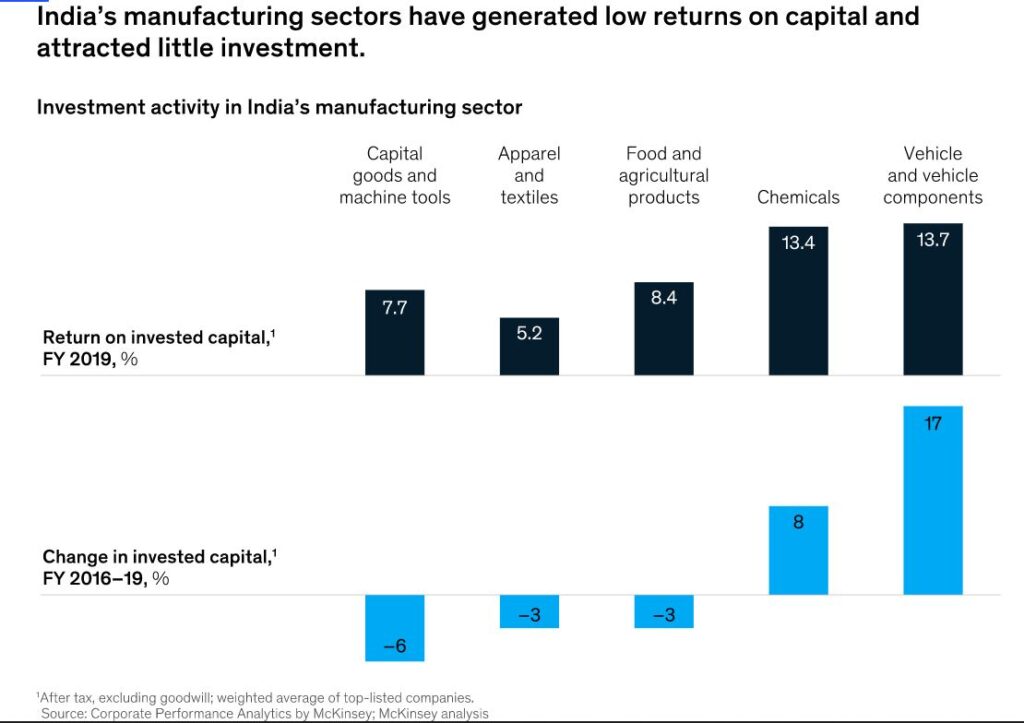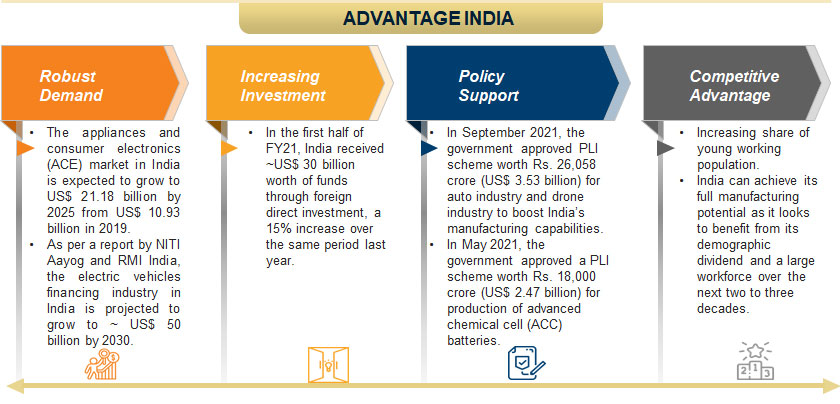The COVID-19 pandemic has highlighted the vulnerability of global supply chains for pharmaceuticals and medical items, food, energy, cars, telecommunications equipment, electronics, and a variety of other goods. Several organizations have begun to reorganize their sourcing and manufacturing footprints to increase reliability and resilience, establishing other locations so that they are not reliant on just a few areas. However, some countries are not yet prepared to fully benefit from these changes.
One such country is India, a prospective manufacturing powerhouse that has yet to achieve its potential. India’s manufacturing-sector GDP increased by an average of 9.5 percent per year from the fiscal year 2006 to the fiscal year 2012. After that, growth slowed to 7.4 percent for the next six years. Manufacturing contributed 17.4 percent of India’s GDP in the fiscal year 2020, up from 15.3 percent in the fiscal year 2000. In addition, the manufacturing sector’s share of employment in India has expanded by only one percentage point during the last 13 years, compared to a five-point gain in the services sector.

Manufacturing has become one of India’s most rapidly expanding industries. Shri Narendra Modi, India’s Prime Minister, initiated the ‘Make in India‘ campaign to put India on the map as a manufacturing center and to give the Indian economy international prominence. The government intends to create 100 million new jobs in the sector by 2022.

Market Size
According to preliminary estimates for the first quarter of 2021-22, India’s GDP was Rs. 51.23 lakh crore (US$ 694.93 billion) at current prices in the first quarter of FY22. At current prices, manufacturing GVA is expected to be US$ 97.41 billion in the first quarter of FY22.
The seasonally adjusted IHS Markt India Manufacturing Purchasing Managers’ Index (PMI) stood at 52.3 in August 2021. Capacity utilization in India’s manufacturing sector remained at 72.0 percent in the second quarter of FY22, according to a poll done by the Federation of Indian Chambers of Commerce and Industry (FICCI), suggesting strong improvement in the industry. As of July 2021, the overall index was 134.0.
Growth in the production of natural gas, steel, cement, fertilizers, coal, refinery products, and power aided the index’s rise. Natural gas production increased by 18.9 percent in July 2021, while coal production increased by 18.7 percent, petroleum refinery production increased by 6.7 percent, fertilizer production increased by 0.5 percent, steel production increased by 9.3 percent, cement production increased by 21.8 percent, and electricity production increased by 21.8 percent (9.0 percent). Between April and July 2021, the manufacturing component of IIP was 122.3. Between April and August 2021, merchandise exports from a few industries (engineering, petroleum products, gems and jewelry, medicines, and chemicals) totaled US$ 106.06 billion.

Investments
As global titans, India is on its path to becoming a hi-tech manufacturing hub thanks to the Make in India initiative. Companies such as Toshiba, GE, HTC, Siemens, and Boeing have either established or are planning to establish manufacturing plants in the country, attracted by India’s market of over a billion consumers and rising purchasing power.
Between April 2000 and June 2021, cumulative FDI inflows into manufacturing subsectors totaled US$ 100.35 billion, according to the Department for Promotion of Industry and Internal Trade (DPIIT). The Indian government boosted FDI in defense manufacturing under the automatic route from 49 percent to 74 percent in May 2020. India has emerged as one of the most attractive manufacturing investment destinations.
Government initiatives
The Indian government has taken several steps to foster a healthy environment for the country’s industrial industry to thrive. A PLI program for 16 factories producing key starting materials (KSMs), medication intermediates, and active pharmaceutical ingredients was approved by the government (APIs). The establishment of these 16 plants will cost Rs. 348.70 crores (US$ 47.01 million) and result in the creation of 3,042 jobs. By April 2022, commercial development of these plants is planned to commence. India lays out a strategy for meeting its goal of $1 trillion in manufactured goods exports in August 2021.
In March 2021, the government offered incentives worth US$ 1 billion in cash to each semiconductor business that develops production units in the country as part of its attempts to boost its smartphone assembly industry and enhance its electronics supply chain. India’s domestic growth in manufacturing, trade and other sectors is predicted to be boosted by the Union Budget 2021-22. A main focal field is the development of a robust infrastructural, logistical, and utility environment for the manufacturing industry.

Future
India is a desirable location for manufacturing investments from throughout the world. Several mobile phone, luxury, and automobile firms, among others, have built up manufacturing operations in the country or are considering doing so.
By 2025, India’s manufacturing sector has the potential to generate more than $1 trillion in revenue. The Goods and Services Tax (GST) will turn India into a common market, enticing investors, with a GDP of USD 2.5 trillion and a population of 1.32 billion people. According to the Indian Cellular and Electronics Association (ICEA), legislative interventions might help India increase its total laptop and tablet production capacity to US$ 100 billion by 2025.
The government is focusing on establishing industrial corridors and smart cities to secure the country’s overall growth. The corridors will also help in integrating, monitoring, and building a favorable environment for industrial development, as well as promoting advanced manufacturing methods.
India has the potential to improve its industrial competitiveness and become a preferred supplier not only to its enormous consumer base but also to global markets. The specialization method, which focuses on removing bottlenecks in selected value chains, has a lot of promise for bringing manufacturers together and, with government backing, increasing productivity, acquiring superior know-how, and creating higher returns on capital.
Written by- Niki Shah
